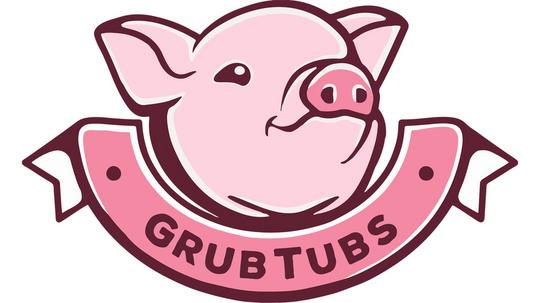
You’re having dinner on a Friday night at a top barbecue establishment in Austin. Unfortunately, you couldn’t finish the three meat combo and two sides you ordered. You can't take it home, so you throw it away.
Even worse, the restaurant has makes a bit too much, and the staff throws the food in the dumpster, never to be seen again. Seems like a waste of food, right?
As an environmental major at Southern Methodist University in the early 2000’s, Robert Olivier had a curiosity surrounding food waste. A Barry Goldwater scholarship winner, he first found his interest through a project involving an insect. This particular insect ate everything in a day, and from there, Olivier was able to grow the insect, and ultimately make chicken feed out of the insect. He then fed the insects to the chickens, giving those chickens important proteins for their diets.
This focus on preserving nutrients and feed safety was what led Olivier to create Grubtubs.
“Temperature control is difficult, and I had to look at fermentation, which is what we did before refrigerators were around” Olivier says. “It was a pure accident that by providing an airtight container to the restaurants, we changed the dynamic of food waste.”
How It Works

Grubtubs work in an easy, three step process. First the Grubtubs collect the tubs of fermented waste that build up, and deliver it to local farmers who have what are called “grub hatchlings.” Then, these hatchlings consume the food and turn into high-protein grubs, which the farmers feed to their livestock.
The grubs are actually better for the livestock than soy, corn, or other food farmers may feed them. Not only do the livestock end up being a better quality, but farmers save money, to the tune of $1,000 on feed per month for every 1,000 chickens.
The Impact
Grubtubs may have only launched in March (officially), but restaurants and major tech companies are taking note of the work Olivier and company are doing to prevent food waste.
The company is custom building several pink trailers to maximize their pickup ability and there is a waitlist for restaurants to get GrubTubs. Those who have it are experiencing incredible results.
GrubTubs Pitch from GrubTubs on Vimeo.
While the customer list includes big corporations (W Hotel, Alamo Drafthouse and Facebook) and local Austin favorites (Via 313 and G’raj Mahal), one of the biggest successes Olvier cites is the newly opened French bistro Le Politique. Using Grutubs allowed the restaurant to become much more aware of the food that was being wasted, which forced the owners to adjust their food purchases. Not only that, Le Politique went from having 11 trash cans to four, along with 15 Grutubs.
Olivier says the number one piece of feedback he gets from restaurants that use GrubTubs is that many have taken these lessons on food waste all the way to their recipe making. Some are using different parts of food that they wouldn’t normally cook with for appetizers and entrees, and eliminating waste in the process.
Restaurants are also noticing results when it comes to trash pickup.
“Instead of dumpster pickups once day, you get dumpster pickups when the GrubTubs are full,” Olivier says. “GrubTubs don’t smell either, so you’re able to get them picked up once a week, saving on trash costs.”
While the results paint quite the picture, Olivier says there is a bit of a learning curve with new customers. For many restaurants and cafeterias, it can take one to two months for them to learn how to effectively optimize their GrubTubs.
“We sell a subscription model at $190/month,” Olivier said. “Your trash bill may be high at the beginning, but as you use the GrubTub, your trash bill is lowered, and your GrubTub becomes the more expensive piece when it comes to landfill costs.”
The Farmer Side of the Business
While restaurants have wholeheartedly embraced GrubTubs, Olivier is hoping the company catches on amongst farmers.
“Farmers are more conservative in their practices, and take a lot longer to onboard.”
GrubTubs recently onboarded the first farmer to great success. GrubTubs was able to help him expand his flock by 5000 meatbirds, saving him $5,000 a month in costs. But Olivier knows just one farmer isn’t going to change the game -- it’s about scaling.
“It’s not just about helping the farmers at the farmer’s market, it’s about scaling. Olivier said. “Feed is more expensive than labor, and with Austin losing nine acres a day to development, we are working to give farmers relief from those high feed prices.”
“Austin food culture embraces farmers (with popular dishes like pulled pork and brisket) and we want to build that table-to-farm movement to help support local agriculture all over the U.S. and make a difference.”








